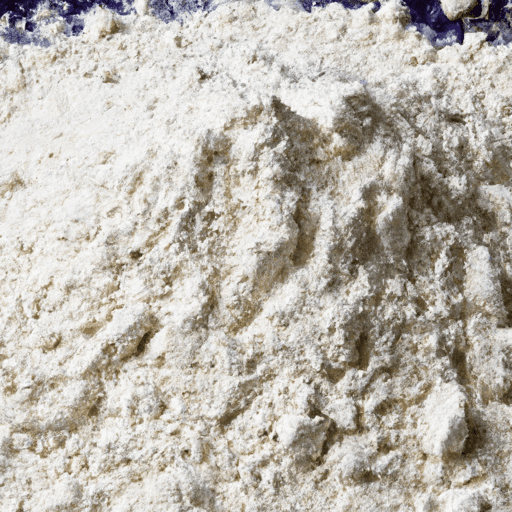Understanding Aluminum-Free Baking Powder: A Must-Have Ingredient for Health-Conscious Bakers
Are you someone who loves to bake delicious goodies right in the comfort of your own kitchen? If so, then you must be familiar with baking powder, a crucial ingredient that provides lightness, volume, and texture to your favorite confections. In recent years, there has been a surge in popularity for aluminum-free baking powder, with health-conscious bakers opting for this alternative. Let’s dive deeper into the world of aluminum-free baking powder and explore its taste, common uses, nutritional value, and some intriguing history.
The Taste of Aluminum-Free Baking Powder
Aluminum-free baking powder, just like its conventional counterpart, is commonly described as having a neutral taste. It doesn’t add any distinct flavor to your culinary creations, allowing the other ingredients to shine. Whether you’re baking fluffy cakes, airy biscuits, or delectable pastries, this type of baking powder ensures that the delicate flavors are not compromised.
Common Uses in Cooking
Aluminum-free baking powder is an indispensable ingredient in a wide range of baked goods. From cookies and muffins to pancakes and bread, it plays a vital role in creating the desired texture and consistency. It acts as a leavening agent, releasing carbon dioxide gas when combined with moisture and heat, resulting in the light and airy structure of your baked treats.
Nutritional Value of Aluminum-Free Baking Powder
An essential aspect of aluminum-free baking powder is its nutritional value—or, more accurately, its lack thereof. Unlike some conventional baking powders that contain sodium aluminum sulfate, which can raise concerns for certain individuals, aluminum-free varieties offer a healthier alternative without sacrificing performance. It typically comprises a mixture of cream of tartar, baking soda, and a starch like cornstarch or tapioca starch. These ingredients are gluten-free, low in sodium, and can be suitable for a variety of dietary needs.
Exploring Its Interesting History and Facts
The use of baking powder itself dates back to the mid-19th century when it was first commercially produced. However, it wasn’t until the late 20th century that concerns about aluminum content in baking powder began to emerge. Aluminum-free versions were developed to address these concerns and cater to health-conscious individuals seeking safer alternatives. Today, aluminum-free baking powder has become widely available, giving bakers peace of mind while maintaining the quality of their creations.
It’s worth noting that although aluminum has not been conclusively proven to be hazardous when consumed through baking powder, the availability of aluminum-free options has provided a welcome choice for those who prefer to minimize their aluminum intake.
Conclusion
Aluminum-free baking powder is a remarkable ingredient that empowers health-conscious bakers to create delightful treats without compromising on taste or performance. Its neutral taste and versatility make it an ideal choice for a wide array of recipes. Whether you’re baking for yourself or for others, incorporating aluminum-free baking powder into your culinary repertoire is a step towards mindful and enjoyable baking. So, go ahead and explore the possibilities—you’ll be amazed at how this small switch can elevate your baked goods to a whole new level!
Dive into the world of aluminum-free baking powder and unlock the joys of healthy and delicious baking!
Aluminum-Free Baking Powder
Origin: Baking powder is a leavening agent used in baking to help doughs and batters rise. Aluminum-free baking powder, as the name suggests, is baking powder that does not contain any aluminum compounds. It is a modern variation of baking powder that has gained popularity in recent years.
Common Uses: Aluminum-free baking powder can be used as a leavening agent in various baked goods, including cakes, cookies, muffins, and bread. It reacts with moisture and heat during baking, producing carbon dioxide gas, which causes the dough or batter to rise.
Nutritional Benefits: Aluminum-free baking powder does not provide significant nutritional benefits on its own. Its primary purpose is to ensure proper leavening in baked goods, contributing to their texture and volume. However, baked goods made with aluminum-free baking powder may be more appealing to individuals who avoid aluminum in their diet due to personal preferences or health concerns.
Unique Properties: The primary difference between aluminum-free baking powder and conventional baking powder is the absence of aluminum compounds. Traditional baking powder often contains aluminum sulfate or sodium aluminum sulfate, which can add a slightly metallic and bitter taste to baked goods when used in large quantities. Aluminum-free baking powder avoids this potential taste issue.
Historical Significance: Aluminum-free baking powder gained popularity in response to concerns about the potential health effects of consuming aluminum compounds. While the impact of dietary aluminum is still a subject of scientific debate, many food manufacturers now offer aluminum-free baking powder as an alternative for those who prefer to minimize aluminum intake in their diet.




Use the share button below if you liked it.
It makes me smile, when I see it.